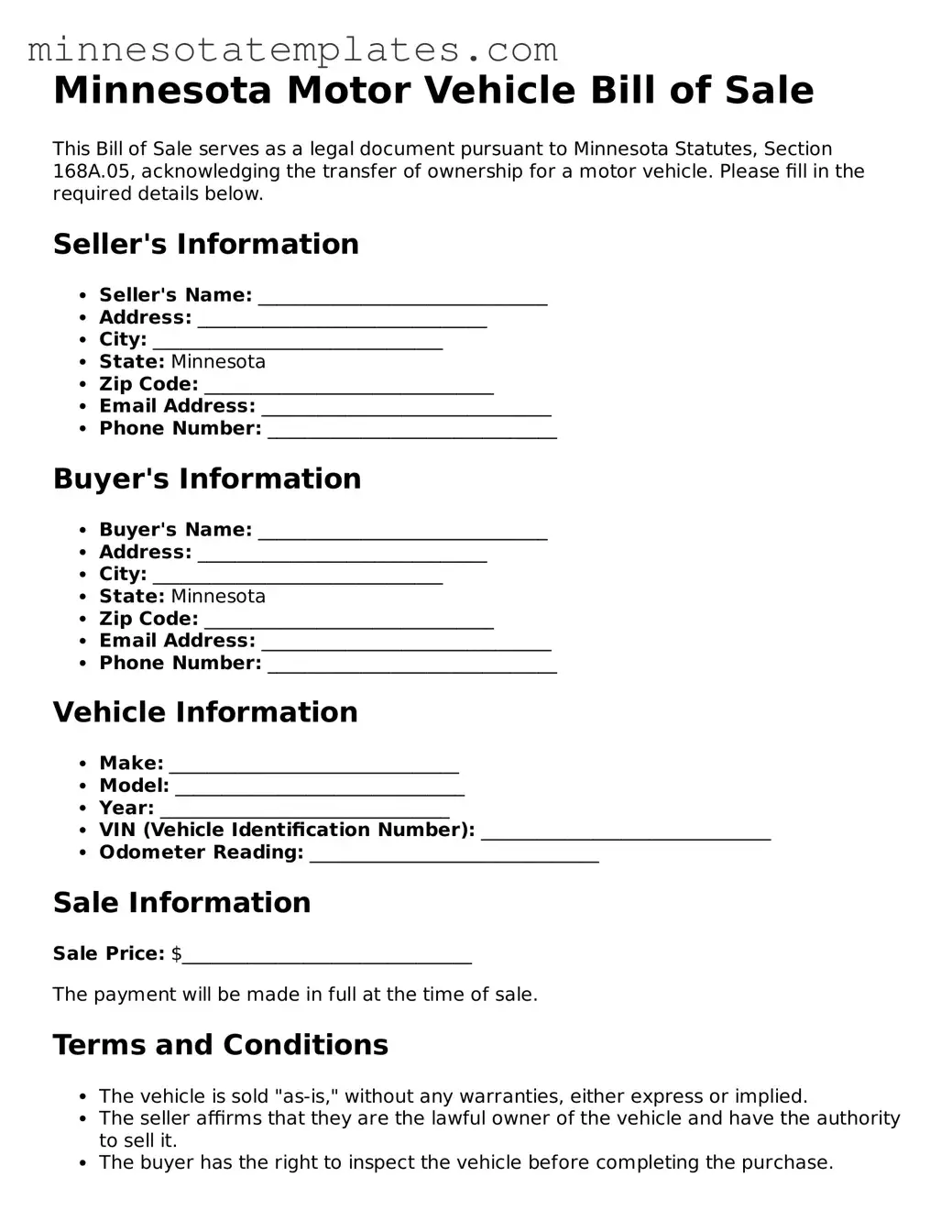Valid Motor Vehicle Bill of Sale Form for the State of Minnesota
The Minnesota Motor Vehicle Bill of Sale is a legal document that serves as proof of the sale and transfer of ownership of a motor vehicle in Minnesota. This form outlines essential details such as the buyer and seller's information, vehicle identification, and the sale price, ensuring a smooth transaction. If you are looking to buy or sell a vehicle, consider filling out the form by clicking the button below.
Access Your Form Now
